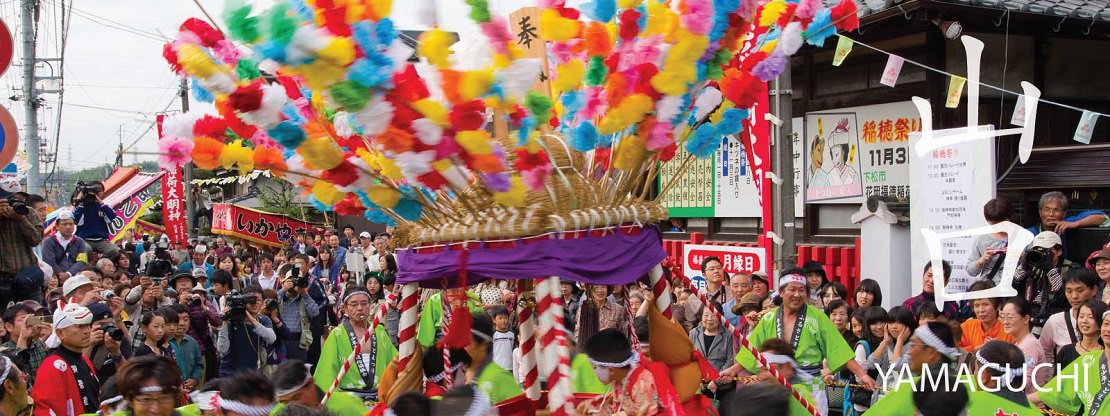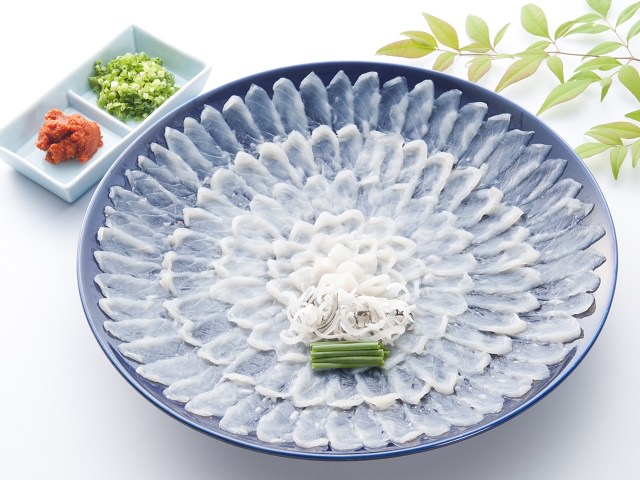-
- USA/Canada 1-800-285-2726
- Australia (02) 8006 4411

Region: Chugoku
Capital: Yamaguchi
Population (approx.): 1.445 million (2012)
Area: 2,359 sq miles
Area Rank: 22
Rurikoji Temple, Sesshu Garden, SL Locomotive
Nicely preserved former castle town and famous for its local pottery

Yamaguchi Prefecture is located in the Chugoku region and served an important role in ending Japan’s feudal area. In its capital Yamaguchi City is Rurikoji, a Buddhist temple known for its glorious five storied pagoda. It is considered one of Japan’s three greatest pagodas and is a national treasure. Rurikoji’s temple grounds, Kozan Park, is the burial site of the Mori family who ruled during the Edo Period. The park also has a famous tea house called Chinryutei where Saigo Takamori and his group pretended to practice tea ceremony but actually planned the overthrowing of the Edo Shogunate. The Kintai-kyo Bridge of Iwakuni City of Yamaguchi is also a popular tourist destination, especially during cherry blossom season. The bridge is completely made of wood without the use of nails. The bridge was completed in 1673 but was destructed when it was struck by a typhoon. The bridge was then reconstructed by the residents’ wishes in 1953. The bridge was actually again recently renovated, costing over two billion yen. There is a fee for those who wish to walk across the bridge.
Suspension bridge crossing the Kanmon Straits
Series of five wooden arches on the Nishiki River
Beautiful all year round and appointed National Significant Scenery
Largest limestone karst topography and plateau
Quaint countryside experience creating jam
Engine Model C571 Steam Locomotive
Aquarium known for its unique collection of pufferfish
Japan's first Tenmangu shrine
Japan's largest and longest limestone cave with underground waterfalls
Great scenery bridge used in several car commercials
Museum on hardships and contributions made by emigrants in Hawaii

Yamaguchi Prefecture consumes the most “fugu”, or puffer fish. Puffer fish is known to be deadly if not prepared correctly, but is also known as a delicacy. The fish is enjoyed is most commonly enjoyed as sashimi or in hot pot. Fugu sashimi is called "fugu sashi" or "tessa" and is cut very thinly. The thin fugu sashi is translucent and is placed decoratively on a plate.
A popular dish in Yamaguchi is the "kawara soba". "Cha-soba", or green tea buckwheat noodles, are boiled then stir stir fried on a heated "kawara" or roof tile, with beef, shredded egg omelette, spring onions, and lemons. Kawara soba adds a unique twist to the ordinary cha-soba by giving it a nice crisp. Be sure to try a roof tile plate of kawara soba if you are ever in the area.

Hagi-yaki, Japanese pottery, developed in a town in Yamaguchi called Hagi. The style of pottery originated in Korea and in 1604 two Korean potters were brought to Japan to create these works of art. This style of pottery became known as hagi-yaki and was modified to meet the aesthetic tastes of the Japanese. Hagi-yaki gained popularity and critical recognition for its unique style featuring small cracks and its porous surface. The pottery is said to become better after several uses, and changes color due to the tea or sake being absorbed through the tiny cracks. This change in color and pattern after years of use is called "Hagi-no-Nanabake" or "The Seven Changes of Hagi". The hagi-yaki usually changes into a cooler tone and its cracks become more apparent, adding character to the work.

Before the beginning of every spring in February, Akiyoshidai, a large karst topography, is burned to welcome the new season. About a thousand residents and locals gather in the morning to perform the burning event. The point of the burning event is to burn away all the dead grass from the winter to create a fresh area of land for the spring flowers and grass. The event usually starts at about 9:30 am and within a few hours the burning is complete.